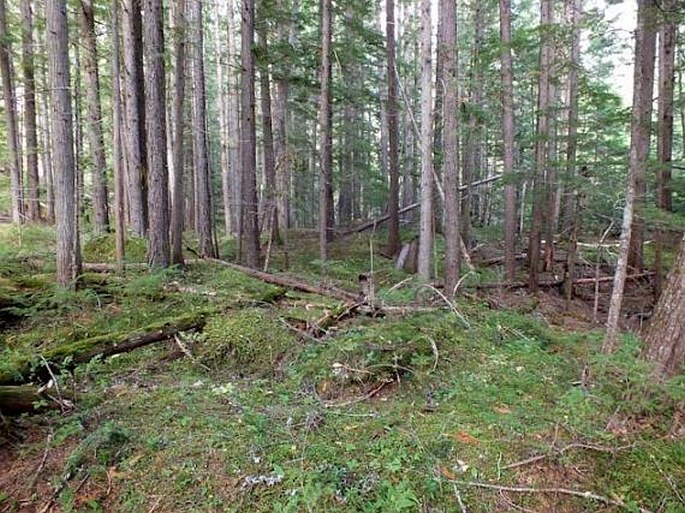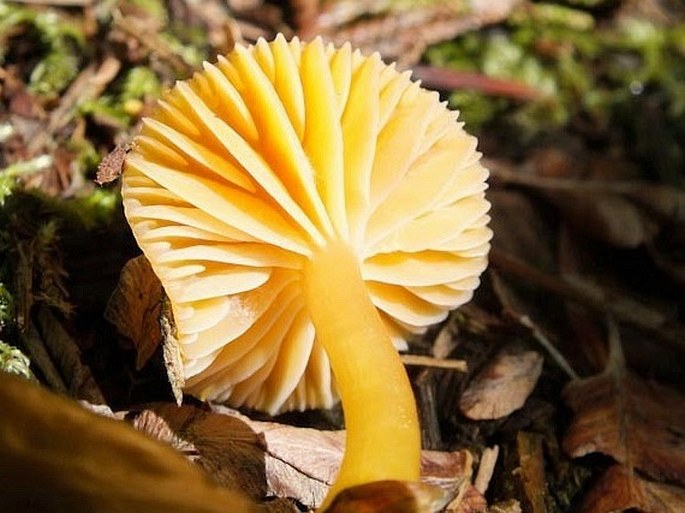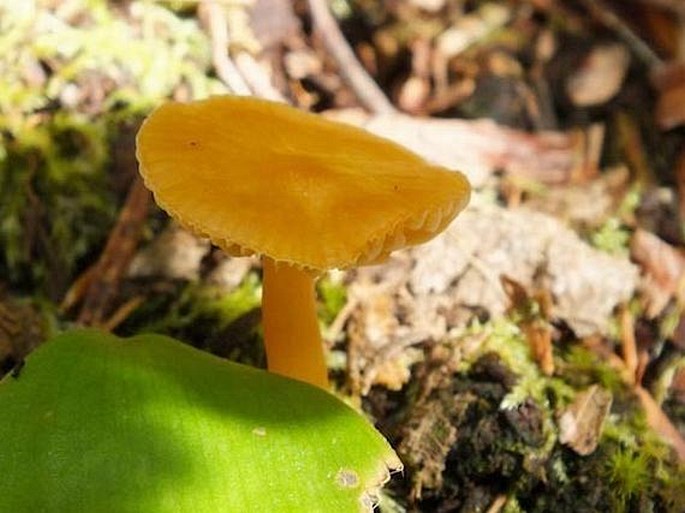Syn.: Agaricus ceraceus Wulfen, Agaricus cereus J. F. Gmel., Gymnopus ceraceus (Wulfen) Gray, Hygrophorus ceraceus (Wulfen) Fr., Hygrocybe subvitellina Bon
Family: Hygrophoraceae Lotsy

Distribution: North America, Europe. Fairly rare in Czechia; collected ten times only. Fairly common in Canada and US.
Ecology: Widely scattered or solitary in the fall in mixed forests or in grass along little frequented forest roads, both on bare soil and moss.

Description: Cap 5–30 mm wide, convex, later flat, slightly viscid, orange yellow. Gills adnate to decurrent, same colour as cap. Stalk cylindrical, 4–9 cm long, 3–10 mm thick, smooth, dry, sometimes tacky, but not slimy, yellow. Spore print white, spores 5.5–8 × 4–5 microns.
Use: Not poisonous, watery and little substance. One author declared that it would be a colourful and novel addition to a salad. So would a banana slug.
Threat and protection: Czech records show this species as insufficient information and in Bulgaria it is listed as endangered.


These images were taken in Canada, British Columbia, Burton (September 2013).


